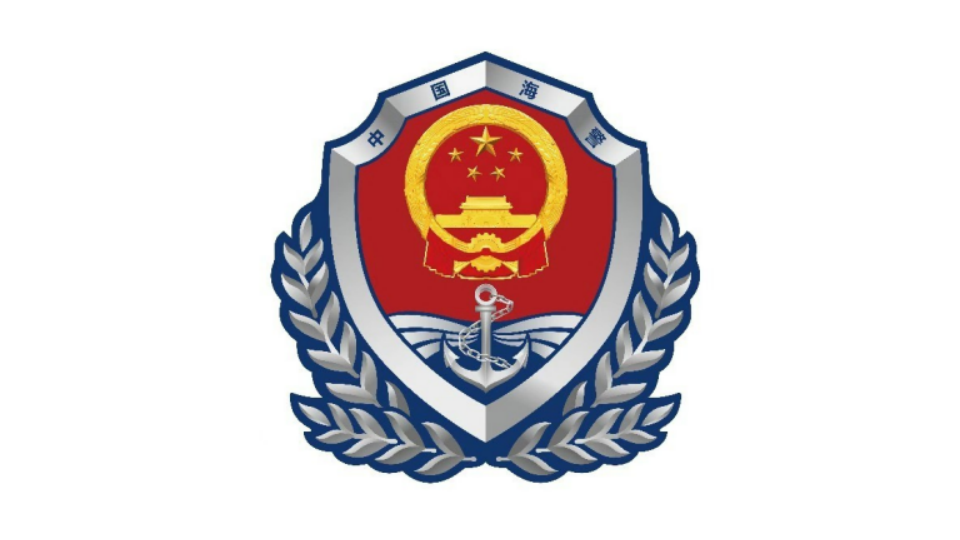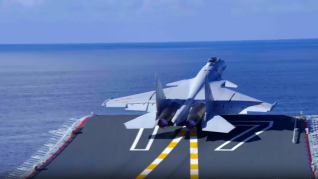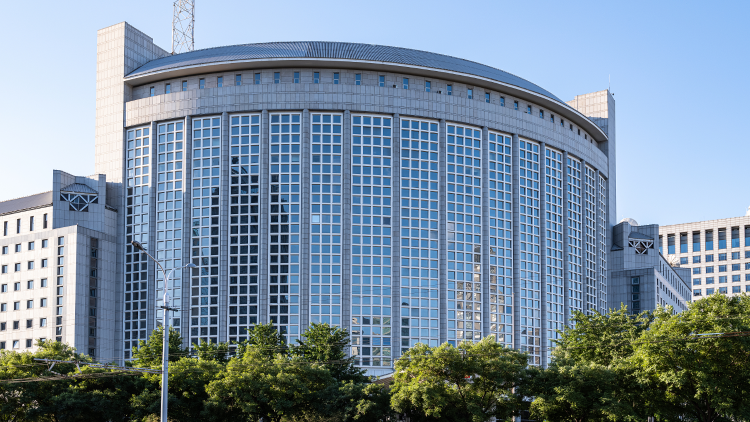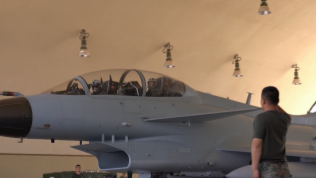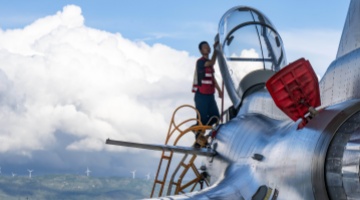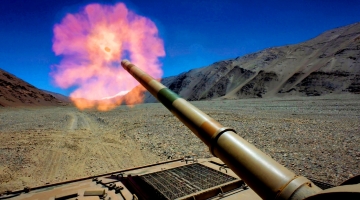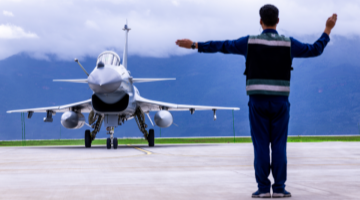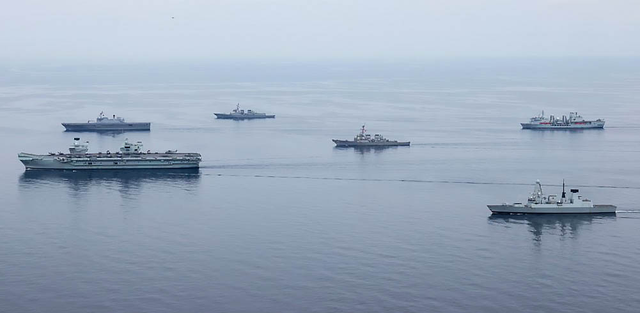
By Ling Yunzhi
Foreign media reported that the ROK Navy and the British aircraft carrier HMS Queen Elizabeth formation carried out joint exercises near the Sea of Japan on August 31. Given the constant hotspot issues in the Asia Pacific, the joint exercises may not only aggravate the ROK-DPRK tension and negatively affect the security situation on the Korean Peninsula, but also make the future Asian-Pacific situation more complicated.
ROK intends to realize “aircraft carrier dream” through the exercises
As an important country in the Asia Pacific, ROK has been developing independent military forces and remained restrained and cautious on the major-country competition. In spite of a temporary hesitation, Seoul finally agreed to the joint military exercises with the British carrier fleet because it wished to take this opportunity to tighten the ties with Britain and other western countries and, more importantly, learn more about the carrier’s combat capabilities through the exercise and get Britain to help it develop its own light carriers.
For the exercises, ROK dispatched its 14,000-ton Dokdo-class amphibious assault ship, a quasi-aircraft carrier, and its Sikorsky UH-60 Black Hawk also took off from the Busan naval base and had landing and takeoff on Queen Elizabeth. What ROK want is to have direct contact and a deeper understanding of the carrier, and consequently accelerate the R&D of its own carriers and realize its long-harbored “carrier dream”.
Britain wants to expand influence through Asia Pacific
As a country out of the region, the UK makes no secret of its intention of making deployments in the Asia Pacific, for which it has some deep considerations. As the Asian-Pacific region is becoming a global geopolitical focus, the UK has ramped up its military deployments here in a bid to take a preemptive step and hold a favorable position, with the bigger goal of expanding the activity space on the international stage in the post-Brexit period and playing a truly global role.
For that purpose, British Prime Minister Boris Johnson gave a speech at the House of Commons on November 20, 2020, in which he announced the country’s most ambitious military plan in decades and the return of the British navy to the Asia Pacific in 2021. Part of the plan was sending the aircraft carrier Queen Elizabeth to the region for military operations as a step to implement the “Global Britain” strategy. The recent joint exercises between London and Seoul were a key item on the itinerary of the British carrier task force in the region.
Moreover, the UK-ROK joint exercises also made an important part of the series of regional exercises initiated or participated in by the US. Before the British carrier formation arrived in ROK waters, it had already joined military exercises with the US and Japan. When it sailed northward afterward, its NATO allies, including the US, Australia and the Netherlands, expressed support and sent vessels to escort and replenish the somewhat slim British carrier formation.
During the exercises, the British navy also conducted takeoff and landing drills using the US F-35B stealth fighters fitted on the aircraft carrier to test and strengthen their combat cooperation. Therefore, the UK-ROK exercises are by no means an individual event, but an important supplement and component of America’s series of exercises in the Asian-Pacific region.
Limited strength cannot match global ambition
The one-time global empire is sufficiently motivated to turn to the Asia Pacific, but as Britain’s overall strength has been on the decline after WWII, it is barely able to sustain its global ambition.
Take the British navy for example. The navy itself is seriously understaffed and under-equipped, and the aircraft carrier Queen Elizabeth, the symbol of its maritime forces, is equipped with very few fighter jets, far less than the standard 40-50. As well as the small number of fighters, the carrier task force is so understrength that it needed escorts from American and Dutch vessels during its patrol this time. Besides, Britain’s supply ships that can provide ammunition and other dry good supplies are extremely aged, which greatly undermines the navy’s deterrence during the oceangoing patrol.
In sum, due to the UK’s current overall national strength and the changes in the international situation, the effects of its military operations in the Asian-Pacific region will be limited. Although countries like the US and Japan expressed a welcome to London’s shift toward the region and tried hard to rope it in, they all have their own calculations, not to mention that the regional situation has become ever more complex with the growing competition among major countries and their shift of focus to the east. In this connection, it is really not a wise move for Britain to swim with the tide to the Asia Pacific.
Editor's note: This article is originally published on thepaper.cn, and is translated from Chinese into English and edited by the China Military Online. The information, ideas or opinions appearing in this article do not necessarily reflect the views of eng.chinamil.com.cn.






